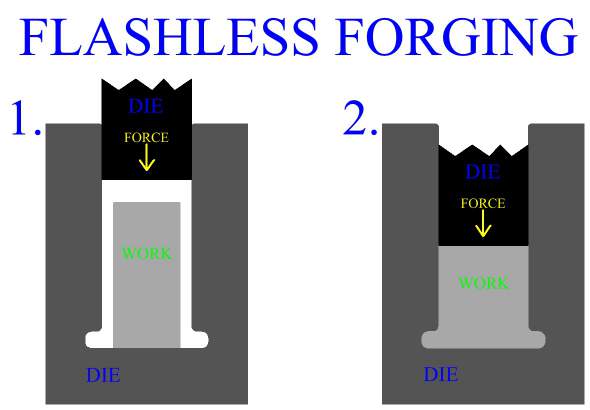Modern technological advances in the metal forging process and in the design of die, have allowed for the development of precision forging. Precision forging may produce some or no flash and the forged metal part will be at or near its final dimensions, requiring little or no finishing. The number of manufacturing operations is reduced as well as the material wasted. In addition, precision forging can manufacture more complex parts with thinner sections, reduced draft angles, and closer tolerances. The disadvantages of these advanced forging methods are that special machinery and die are needed, also more careful control of the manufacturing process is required. In precision forging, the amount of material in the work, as well as the flow of that material through the mold must be accurately determined. Other factors in the process such as the positioning of the work piece in the cavity must also be performed precisely.
Flashless Forging
Flashless forging is a type of precision forging process in which the entire volume of the work metal is contained within the die and no material is allowed to escape during the operation. Since no material can leave the mold as the part is forged, no flash is formed. Like other precision forging processes, flashless forging has rigorous process control demands, particularly in the amount of material to be used in the work piece. Too little material and the die will not fill completely, too much material will cause a dangerous build up of forces. 
|
No comments:
Post a Comment